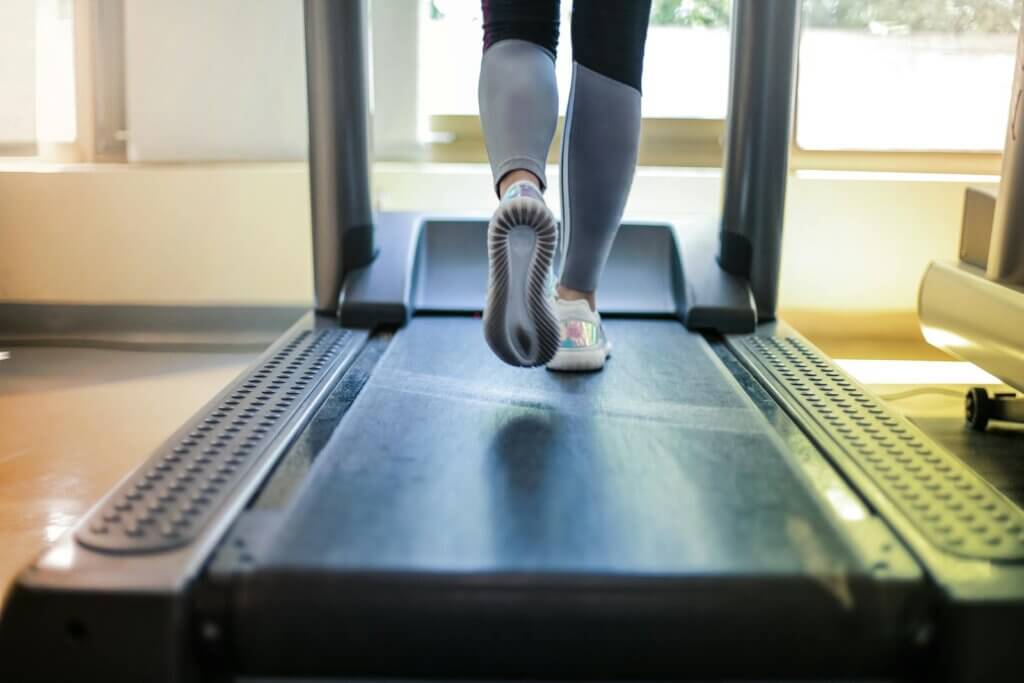Are you wondering, “Is a 10 minute mile good?” Whether you’re a seasoned runner or just starting out, this question might be on your mind.
A 10 minute mile is a solid pace for many people. It shows you’re maintaining a good level of fitness and can cover some distance comfortably. Whether you’re running for leisure or training, hitting that mark is something to feel proud of!
In this post, we break down the significance of a 10 minute mile for men, women, and beginners in general.
Discover tips on achieving a 10 minute mile, whether on the road or treadmill. Stick around for insights on walking a 10 minute mile, calorie burn, cadence, and weight loss. Let’s lace up and uncover the truth behind the 10 minute mile.
Table of Contents
Is a 10 minute mile good?
It can be a respectable pace for many runners, indicating moderate fitness and endurance. However, whether it’s deemed “good” depends on various factors such as individual goals, experience level, and overall health. For some, achieving a 10 minute mile might signify significant progress, while others may strive for faster times.
Is a 10 minute mile good for a man ?
A 10 minute mile might be seen as good progress for some men, especially those starting out or focusing on overall fitness. However, for others, particularly seasoned runners or those training for specific races, it may fall short of their desired pace.
Example
Consider John, who recently started running to improve his overall health. Completing a mile in 10 minutes feels like a significant achievement for him, considering he couldn’t run for more than a few minutes without stopping when he began.
On the other hand, there’s Michael, an experienced runner training for a half-marathon. While he can comfortably run a mile in under 8 minutes, he’s working towards consistently maintaining a 7-minute pace, so a 10 minute mile wouldn’t meet his current training goals.
Is a 10 minute mile good for a woman ?
Similar to men, some women may view a 10 minute mile as an achievement, indicating improved fitness and endurance. Yet, for more experienced female runners or those aiming for competitive goals, they might aim for a faster pace.
Example
Emily, a working mother, has recently taken up running to increase her energy levels and manage stress. Completing a mile in 10 minutes feels like a big win for her, given her busy schedule and prior lack of exercise.
Conversely, Sarah, a competitive runner aiming to qualify for a marathon, regularly logs miles at a pace closer to 8 minutes. For her, a 10 minute mile might signify a slower training day rather than a satisfying achievement.
Is a 10 minute mile good for a beginner ?
For beginners, a 10 minute mile is often seen as a milestone. It represents progress and improvement in both speed and endurance. Starting with a slower pace and gradually working towards a 10 minute mile can be an excellent goal for those new to running.
At the end of the day, whether a 10 minute mile is considered “good” depends on individual goals, fitness levels, and personal benchmarks.
Read also: Is a 7 minute mile good?
What is a 10 minute mile pace?
A 10 minute mile pace means running one mile in 10 minutes. It’s a straightforward measure of how fast you’re covering distance.
10 minute mile (mph)
When you run a 10 minute mile, you’re moving at a pace of 6 miles per hour (mph). This pace is moderate and achievable for many recreational runners.
10 minute mile in km
For those using kilometers, a 10 minute mile is equivalent to running at a pace of approximately 6.2 kilometers per hour (km/h).
BPM for 10 minute mile
Your heart rate, or beats per minute (BPM), while running a 10 minute mile can vary depending on factors like fitness level and exertion, but it typically falls within the moderate intensity range of 140 and 160 BPM.
Read also: Is a 9 minute mile good?
10 minute mile marathon

In the context of marathons, the 10 minute mile pace serves as a crucial benchmark. Let’s break it down: Covering the marathon’s standard 26.2 miles at this pace would lead to a finish time of approximately 4 hours and 22 minutes.
While this time may seem optimal for many, it’s essential to consider various factors impacting marathon performance. Terrain, weather conditions, and individual fitness levels can all influence your pace on race day.
💡Tips
Consistent training and adaptability are vital for maintaining a steady pace throughout the grueling distance. Thus, while aiming for a 10 minute mile pace is commendable, adjusting expectations based on race-day conditions ensures a more realistic approach to achieving marathon success.
10 minute mile half marathon
Running a half marathon at a 10 minute mile pace is a common goal for many runners. Let’s break it down:
A half marathon is 13.1 miles long. If you maintain a steady pace of 10 minutes per mile, it would take you approximately 2 hours and 11 minutes to complete the race. This pace allows for a manageable but challenging effort, keeping you on track to finish within a reasonable time frame.
How to run a 10 minute mile
Embarking on the journey to conquer the 10-minute mile is an exciting endeavor, filled with personal milestones and achievements. With these eight practical tips, you’ll uncover the strategies to refine your pace, breathing, and form, empowering you to surpass your running goals and embrace the thrill of progress.

1. Find Your Rhythm
Determine a pace that allows you to complete each mile comfortably within 10 minutes. For instance, if you’re aiming for a 10 minute mile, you should ideally aim for a pace of around 6 miles per hour. However, it’s important to listen to your body and adjust your speed accordingly. If you’re feeling fatigued, it’s okay to slow down a bit.
2. Focus on Breathing
Practice rhythmic breathing to optimize oxygen intake and reduce fatigue. A common technique is the 2:2 breathing pattern, inhaling for two steps and exhaling for two steps. Adjust the pattern to what feels natural for you. For example, you might find a 3:3 or 4:4 pattern more comfortable.
3. Use a Timer
Set specific time goals for your mile runs and track your progress over time. Start with a realistic target, such as completing a mile in 10 minutes, and work towards improving your time gradually. For instance, aim to shave off a few seconds or even a minute with each run.
4. Warm Up Properly
Dedicate at least 5-10 minutes to warming up before starting your run. Engage in dynamic stretches that target major muscle groups, such as leg swings, arm circles, and lunges. This helps increase blood flow to your muscles and reduces the risk of injury.
5. Work on Technique
Focus on maintaining proper running form throughout your run. Keep your head up, shoulders relaxed, and arms bent at a 90-degree angle. Land softly on your midfoot and push off with your toes to propel yourself forward efficiently.
6. Interval Training
Incorporate intervals of faster running (e.g., sprinting) followed by periods of recovery (e.g., jogging or walking). For instance, alternate between 1 minute of sprinting and 2 minutes of jogging for a total of 20 minutes. Interval training improves cardiovascular fitness and helps increase your overall running speed.
7. Stay Hydrated
Drink water before, during, and after your run to stay hydrated and maintain optimal performance. Aim to consume at least 8 ounces of water 20-30 minutes before your run and sip on water throughout your workout to prevent dehydration.
8. Listen to Your Body
Pay attention to any signs of fatigue, discomfort, or pain during your run. If you’re feeling overly tired or experiencing discomfort, it’s important to listen to your body and take a break if necessary. Pushing through pain can lead to injury, so it’s better to err on the side of caution and rest when needed.
Treadmill speed for a 10 minute mile

When it comes to achieving a 10 minute mile pace on a treadmill, finding the right speed is key. Most treadmills measure speed in miles per hour (mph). To hit that target pace, you’ll want to set your treadmill to a speed of 6 miles per hour. This allows you to cover one mile in exactly 10 minutes.
However, keep in mind that treadmill calibration can vary, so it’s a good idea to double-check your speed settings against an external source, like a GPS watch or phone app, to ensure accuracy.
Additionally, factors like incline can affect your perceived effort and overall pace. If you’re finding it challenging to maintain the pace, consider adjusting the incline to simulate outdoor conditions or to vary your workout intensity. Experiment with different speeds and incline levels to find what works best for you.
Final Thoughts
In wrapping up, let’s revisit the question: is a 10 minute mile good? The answer isn’t a simple yes or no. For many recreational runners, achieving a 10 minute mile can be a significant milestone and a sign of progress. It’s a pace that demonstrates a moderate level of fitness and endurance.
However, what’s considered “good” varies from person to person and depends on individual goals and circumstances. Some may strive for faster times, while others may focus on simply enjoying their run. Additionally, factors like age, fitness level, and terrain can all influence what’s considered a good pace.
So, while a 10 minute mile can be a respectable goal for many, it’s essential to remember that the definition of “good” is subjective and personal.
As we conclude this discussion, consider exploring other aspects of running and fitness that interest you. Whether it’s improving endurance, tackling longer distances, or enhancing overall health, there’s always more to discover on the journey to becoming a better runner. Keep setting goals, pushing your limits, and enjoying the rewards of a healthy, active lifestyle.
Frequently Asked Questions
Can you walk a 10 minute mile?
Yes, it’s possible to walk a 10 minute mile, but it requires a brisk pace. Walking at approximately 6 miles per hour would achieve this pace. However, for most people, walking at this speed may feel more like a light jog.
How many calories does a 10 minute mile burn?
The number of calories burned during a 10 minute mile run depends on various factors such as weight, age, and fitness level. On average, running a mile burns around 100 calories for a person weighing 155 pounds.
What is the cadence for a 10 minute mile?
For a 10 minute mile pace, the cadence typically ranges from 160 to 170 steps per minute. This translates to about 80 to 85 steps per foot.
Is a 10 minute mile good for weight loss?
Running a 10 minute mile can contribute to weight loss, especially when combined with a healthy diet and consistent exercise routine. However, the effectiveness of a 10 minute mile for weight loss depends on individual factors such as diet, overall activity level, and metabolism. It’s essential to focus on overall lifestyle habits rather than just one aspect of exercise.


